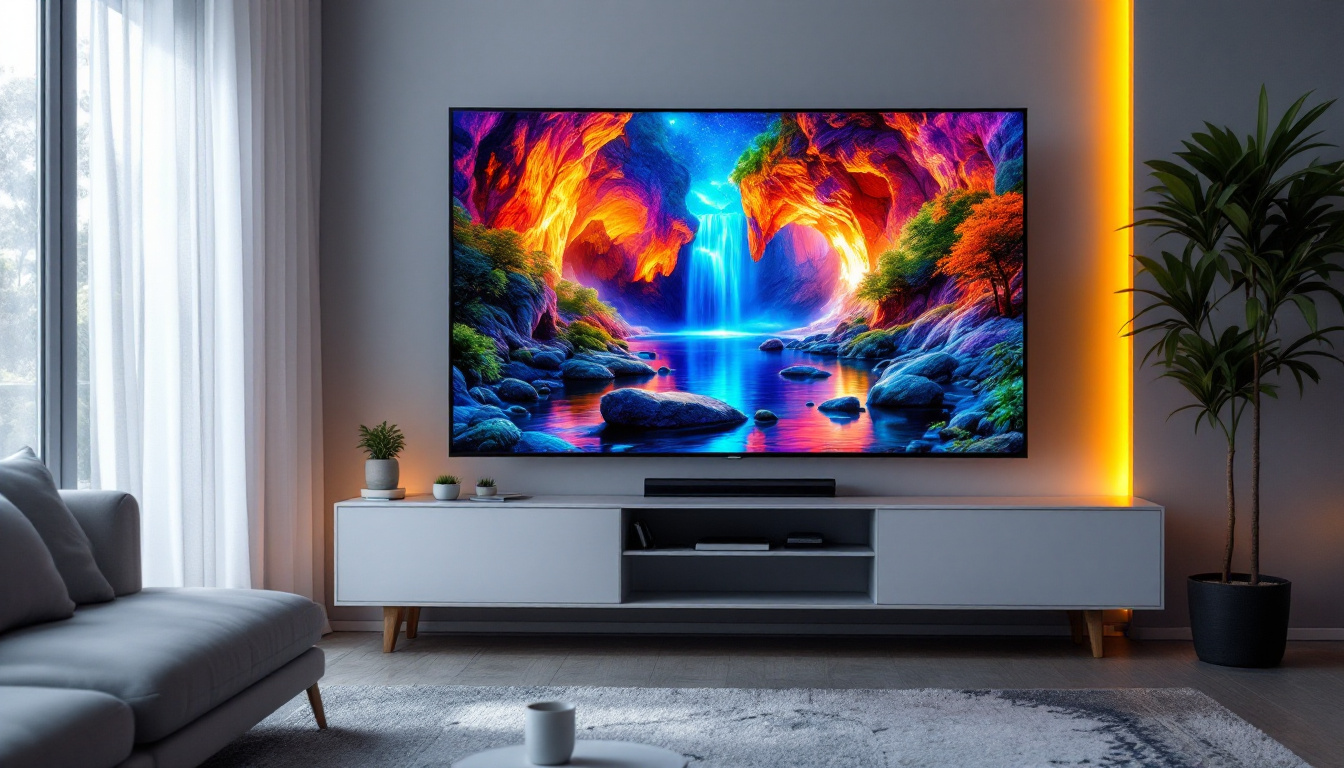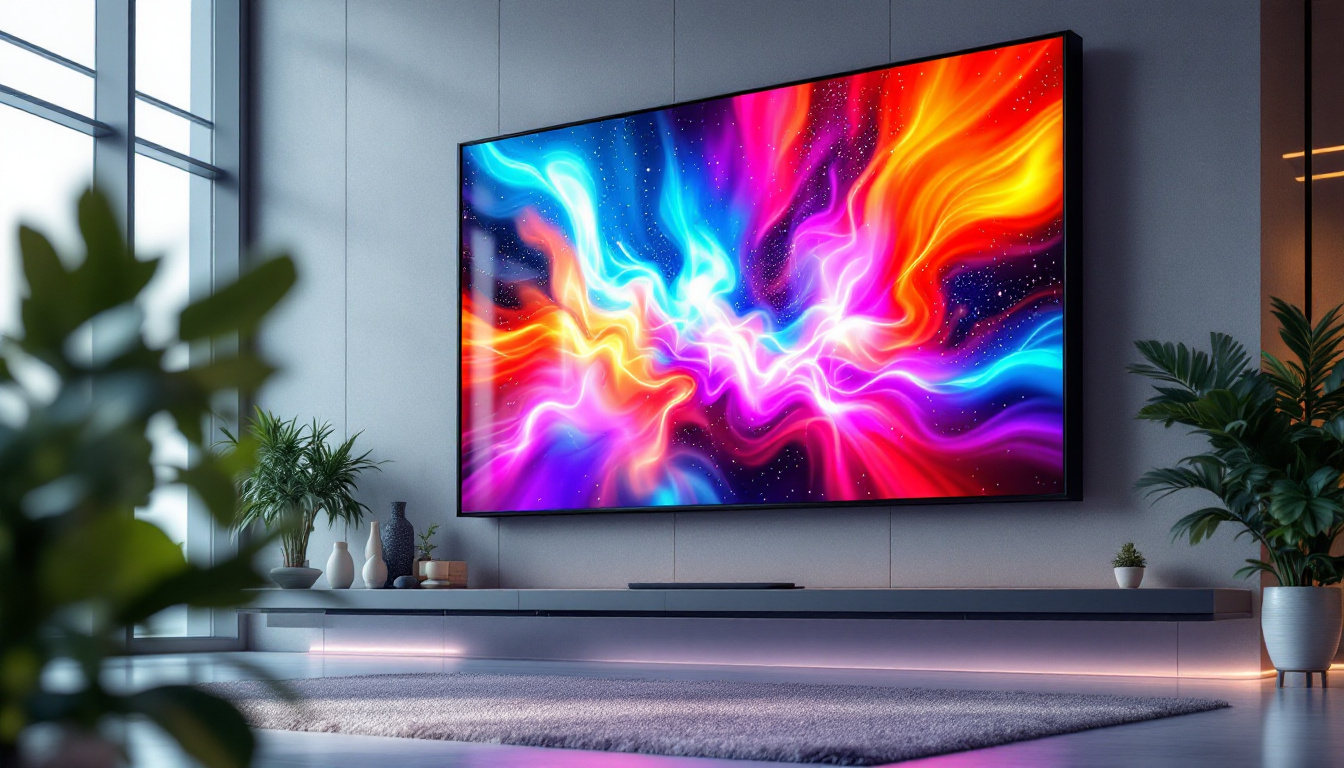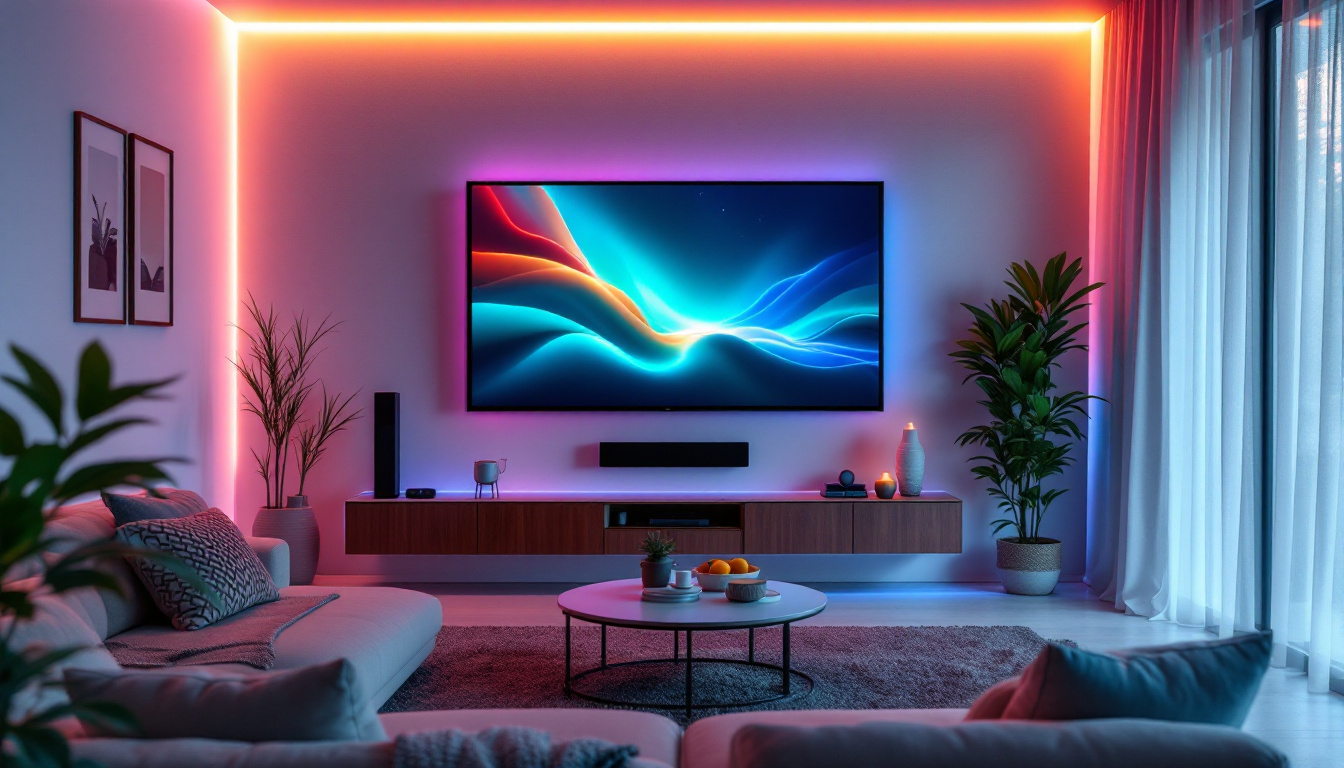What Is An LED LCD TV: LED Display Explained
In recent years, the television market has witnessed a significant evolution in display technology, with LED LCD TVs becoming a popular choice among consumers. But what exactly is an LED LCD TV, and how does it differ from traditional LCD and LED TVs? This article aims to demystify the concept of LED LCD TVs, exploring their technology, advantages, and considerations for potential buyers.
Understanding the Basics of LCD and LED Technology
To grasp the concept of LED LCD TVs, it’s essential to understand the fundamentals of LCD (Liquid Crystal Display) and LED (Light Emitting Diode) technologies. Each plays a crucial role in the functioning of modern televisions.
What is LCD Technology?
LCD technology utilizes liquid crystals sandwiched between two layers of glass or plastic. When an electric current passes through the liquid crystals, they align in a way that allows light to pass through or be blocked, creating images. However, LCDs require a backlight to illuminate the display since they do not produce their own light.
Traditionally, LCD TVs used fluorescent lamps as backlights, which provided adequate brightness but often fell short in terms of color accuracy and energy efficiency. This is where LED technology comes into play.
What is LED Technology?
LED technology refers to the use of light-emitting diodes as a source of backlighting for LCD screens. Unlike traditional fluorescent backlights, LEDs are smaller, more energy-efficient, and can produce a wider range of colors. They also allow for better contrast ratios, making images appear sharper and more vibrant.
LEDs can be arranged in various configurations, such as edge-lit or full-array, which further enhances the display quality. This innovation has led to the development of LED LCD TVs, which combine the benefits of both technologies.
In addition to their superior brightness and color capabilities, LED technology has also paved the way for advancements in television design. The slim profile of LED backlighting allows manufacturers to create thinner and lighter TVs, making them more aesthetically pleasing and easier to mount on walls. Furthermore, the longevity of LED bulbs—often lasting tens of thousands of hours—means that users can enjoy their televisions without the frequent need for replacement, adding to the overall convenience and cost-effectiveness of LED LCD TVs.
Moreover, the integration of smart technology into LED LCD TVs has transformed the viewing experience. Many modern models come equipped with built-in streaming services, voice control, and connectivity options that allow users to easily access a plethora of content. This convergence of display technology and smart features not only enhances user engagement but also reflects the evolving landscape of home entertainment, where viewers seek both quality and versatility in their devices.
The Evolution of LED LCD TVs
The introduction of LED backlighting marked a significant turning point in display technology. LED LCD TVs emerged as a response to consumer demand for better picture quality, energy efficiency, and thinner designs.
Edge-Lit vs. Full-Array LED LCD TVs
LED LCD TVs can be categorized into two primary types based on their backlighting configuration: edge-lit and full-array.
Edge-lit LED LCD TVs have LEDs positioned along the edges of the screen. While this design allows for a slimmer profile, it can sometimes result in uneven lighting and less impressive contrast. On the other hand, full-array LED LCD TVs feature a grid of LEDs behind the entire screen, providing more uniform lighting and superior contrast ratios. This configuration is often preferred by enthusiasts who prioritize picture quality.
In addition to these two configurations, some manufacturers have developed hybrid models that combine elements of both edge-lit and full-array technologies. These innovative designs aim to deliver the best of both worlds, offering a slim profile while also enhancing backlight control for improved contrast and brightness. As display technology continues to evolve, consumers can expect to see even more advancements that push the boundaries of what LED LCD TVs can achieve.
Quantum Dot Technology
Another advancement in LED LCD technology is the incorporation of quantum dot technology. Quantum dots are tiny semiconductor particles that emit specific colors when exposed to light. When integrated into LED LCD TVs, they enhance color accuracy and expand the color gamut, resulting in more vibrant and lifelike images.
This technology has gained popularity in high-end models, offering viewers an immersive experience that closely resembles OLED displays, but at a more accessible price point. The ability of quantum dots to produce a wider range of colors not only enhances the viewing experience for movies and TV shows but also makes them ideal for gaming, where color precision can significantly affect gameplay. As gaming consoles and PCs continue to push graphical boundaries, the demand for displays that can keep up with these advancements is likely to grow, making quantum dot technology a key player in the future of LED LCD TVs.
Advantages of LED LCD TVs
LED LCD TVs come with a host of advantages that make them an appealing choice for consumers. Understanding these benefits can help potential buyers make informed decisions.
Energy Efficiency
One of the most significant advantages of LED LCD TVs is their energy efficiency. Compared to traditional LCDs with fluorescent backlighting, LED TVs consume less power, resulting in lower electricity bills. This eco-friendliness is increasingly important in today’s environmentally conscious society. Additionally, many LED LCD TVs are designed to meet Energy Star standards, which means they not only save energy but also contribute to reducing greenhouse gas emissions. This makes them an excellent choice for consumers looking to minimize their carbon footprint while enjoying high-quality entertainment.
Picture Quality
LED LCD TVs offer impressive picture quality, particularly with full-array backlighting and quantum dot technology. The enhanced contrast ratios and vibrant colors create an engaging viewing experience, making them suitable for various content, from movies to sports. Moreover, advancements in local dimming technology allow for improved black levels and reduced blooming effects, further enhancing the overall picture quality. This technology enables the TV to adjust the brightness of specific areas of the screen, resulting in deeper blacks and more detailed shadows, which is especially beneficial for dark scenes in films or video games.
Furthermore, many LED LCD TVs now support high dynamic range (HDR) content, which allows for a broader range of colors and brightness levels. This means viewers can experience more realistic and immersive visuals, as the colors appear more lifelike and the highlights are more pronounced. With HDR becoming increasingly popular, having a TV that supports this feature can significantly enhance the viewing experience.
Thin and Lightweight Design
Another notable advantage of LED LCD TVs is their slim and lightweight design. The use of LED backlighting allows manufacturers to create thinner panels, making them easier to mount on walls or fit into tight spaces. This aesthetic appeal is a significant factor for many consumers when choosing a television. The sleek design not only complements modern home decor but also allows for more flexible placement options, whether it be in a living room, bedroom, or even a home office.
In addition to their physical attributes, many LED LCD TVs come equipped with smart technology that allows for seamless integration with other devices and streaming services. This means that consumers can enjoy their favorite shows and movies without the clutter of additional equipment. With built-in Wi-Fi and user-friendly interfaces, navigating through various apps and content has never been easier, making the viewing experience more enjoyable and convenient for all users.
Considerations When Buying an LED LCD TV
While LED LCD TVs offer numerous benefits, there are also several factors to consider before making a purchase. Understanding these considerations can help consumers choose the right model for their needs.
Viewing Angles
One of the limitations of LED LCD technology is its viewing angles. Unlike OLED displays, which maintain color accuracy and brightness from various angles, LED LCD TVs can experience color distortion and reduced brightness when viewed from the side. This can be a crucial factor for larger rooms where multiple viewers are present.
Black Levels and Contrast
While full-array LED LCD TVs have made significant strides in improving black levels, they still may not match the true blacks achieved by OLED displays. Consumers who prioritize deep blacks and high contrast ratios may want to explore OLED options, particularly for cinematic experiences.
Price Range
The price of LED LCD TVs can vary widely based on features, size, and brand. While there are budget-friendly options available, high-end models with advanced features such as quantum dot technology can be quite expensive. It’s essential for consumers to set a budget and determine which features are most important for their viewing preferences.
Popular Brands and Models
The market for LED LCD TVs is saturated with various brands and models, each offering unique features and specifications. Some of the most recognized brands include Samsung, LG, Sony, and TCL, known for their innovation and quality.
Samsung QLED TVs
Samsung’s QLED line utilizes quantum dot technology to enhance color accuracy and brightness. These TVs are known for their vibrant displays and impressive performance in bright rooms. The QLED series also features advanced gaming capabilities, making them a popular choice among gamers.
LG NanoCell TVs
LG’s NanoCell technology offers enhanced color reproduction and improved viewing angles. The NanoCell series is designed to provide a more immersive experience, particularly for viewers who enjoy watching content from various angles. LG is also known for its user-friendly interface and smart TV features.
Sony Bravia TVs
Sony’s Bravia line is renowned for its exceptional picture quality and processing capabilities. With features like X-Motion Clarity and TRILUMINOS technology, Sony TVs deliver stunning visuals that captivate viewers. The brand is often favored by cinephiles and those who prioritize high-quality content.
Conclusion: Making the Right Choice
LED LCD TVs represent a significant advancement in television technology, offering a blend of energy efficiency, impressive picture quality, and sleek designs. As consumers navigate the diverse options available in the market, understanding the fundamental differences between LED LCD and other display technologies is crucial.
While LED LCD TVs excel in many areas, potential buyers should consider their viewing habits, room conditions, and budget before making a decision. By weighing the advantages and limitations of LED LCD technology, consumers can find a television that meets their needs and enhances their viewing experience.
In summary, LED LCD TVs are a compelling choice for many households, combining cutting-edge technology with user-friendly features. As technology continues to evolve, these televisions will likely remain a staple in living rooms around the world.
Discover the Future of Visual Experience with LumenMatrix
Ready to elevate your home entertainment or enhance your business’s brand visibility? Look no further than LumenMatrix, a pioneer in LED display technology. Embrace the future with our diverse range of LED display solutions, from the comfort of your living room to the dynamic environment of outdoor advertising. Whether you’re in need of an Indoor LED Wall Display, a vibrant Outdoor LED Wall Display, or any of our specialized solutions like Vehicle LED Displays and LED Sports Displays, LumenMatrix is committed to transforming your visual communication. Check out LumenMatrix LED Display Solutions today and step into a world where clarity meets innovation.































